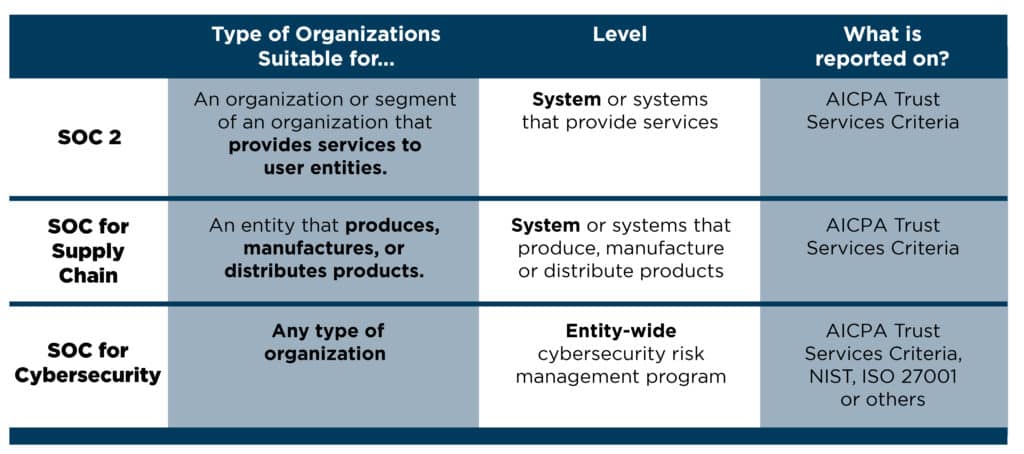The SOC for Supply Chain report is for producers, manufacturers, and distributors and provides specified users with information about the controls within the entity’s system relevant to security, availability, processing integrity, confidentiality, or privacy, enabling users to better understand and manage the risks arising from business relationships with their supplier and distribution networks. This report will identify, evaluate, and mitigate risks that can disrupt your operations or operations of your vendors, and also provides information on your production, manufacturing, or distribution system.
SOC for Supply Chain reports follow the AICPA’s Trust Services Criteria, similar to SOC 2, which is a framework of high-level objectives divided into five categories: Security, Availability, Processing Integrity, Confidentiality and Privacy. The categories are selected based on the relevance to the organization’s principal system objectives. While the criteria are prescriptive, the controls designed to meet those criteria are specific and unique to each organization.
What is the difference between SOC 2, SOC for Supply Chain and SOC for Cybersecurity?
Benefits of SOC for Supply Chain:
- Independent Validation of Your Cybersecurity Diligence: Customers, partners, investors, and internal stakeholders don’t simply have to take your word for it.
- Competitive Advantage: As SOC for Cybersecurity is a relatively new examination, few competitors will be capable of producing a report affirming their cybersecurity practices.
- Enhanced Position Against Data Breaches: With a SOC for Supply Chain report, you reassure external stakeholders of your organization’s sound practices while proactively educating and enhancing internal processes before potential issues arise.
